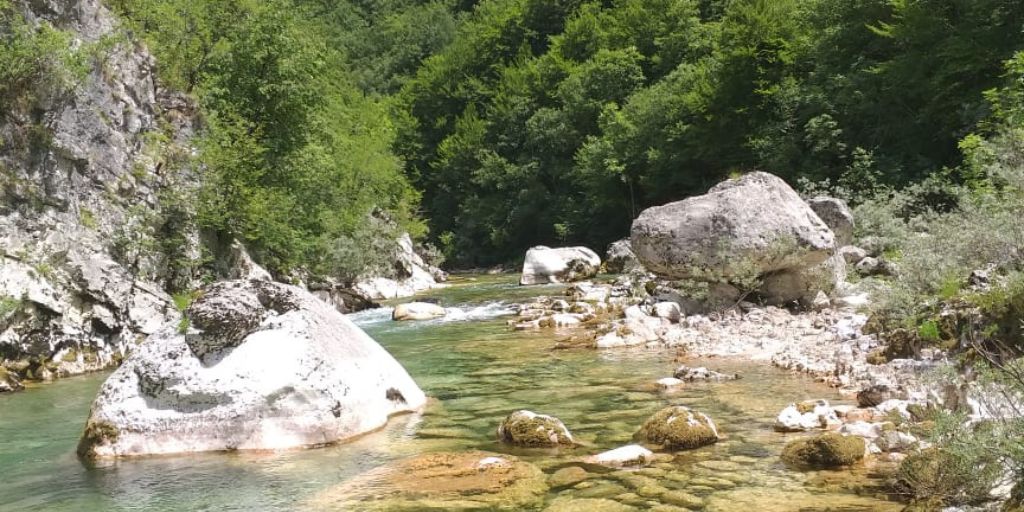Montenegro is touted as the lead EU accession candidate these days, but it’s unfortunately far from ready. The country’s hotly debated new national spatial plan is a case in point, plagued by delays, legal breaches, opacity and all-round low quality.
Pippa Gallop, Southeast Europe Energy Policy Officer and Nataša Kovačević, District Heating Campaigner for the Western Balkans | 24 June 2025

The Komarnica Canyon, Montenegro Photo: Stefan Durutović
A national spatial plan may sound mundane, but it’s crucial for preventing clashes between infrastructure projects, people and nature. So when a public consultation was held on Montenegro’s draft plan last year, it sparked massive public debate.
The draft included a slew of problematic projects such as a liquified gas (LNG) terminal at the port of Bar and highly damaging hydropower plants in sensitive locations, such as Komarnica and Kruševo. No Strategic Environmental Assessment (SEA) has been carried out on the plan, despite being legally mandatory.
After more than a year’s delay, last week Montenegro’s government suddenly approved the plan and submitted it to the Parliament for adoption.
The new version at least has no LNG terminal in, but it remains highly problematic due to the Komarnica and Kruševo hydropower plants. It also mentions hydropower plants on the Morača and Ćehotina rivers, though in less detail. All these locations are highly sensitive and stunningly scenic, needing effective legal protection and low-impact enjoyment, not dams!
In any case, building more hydropower in a country that is up to 60 per cent dependent on it already makes no sense in an era of climate chaos. Montenegro’s electricity generation already fluctuates wildly from year to year due to its climate vulnerability.
The Parliamentary legal committee is due to discuss the plan on 26 June, but Montenegrin civil society groups are asking for a freeze, to allow for proper public consultations and an SEA on the current version of the document.
Since adopting the plan is part of Montenegro’s Reform Agenda under the Reform and Growth Facility, the European Commission has a key role to play here. It must insist on Montenegro truly meeting EU standards, not just ticking boxes on having implemented ‘reforms’. The temptation of finally having an accession ‘success story’ must never be allowed to come at the expense of people, nature and EU law.
Never miss an update
We expose the risks of international public finance and bring critical updates from the ground – straight to your inbox.
Theme: hydropower |
Location: Montenegro
Project: Protecting rivers and communities in southeast Europe
Tags: Balkan hydro | Montenegro | biodiversity
